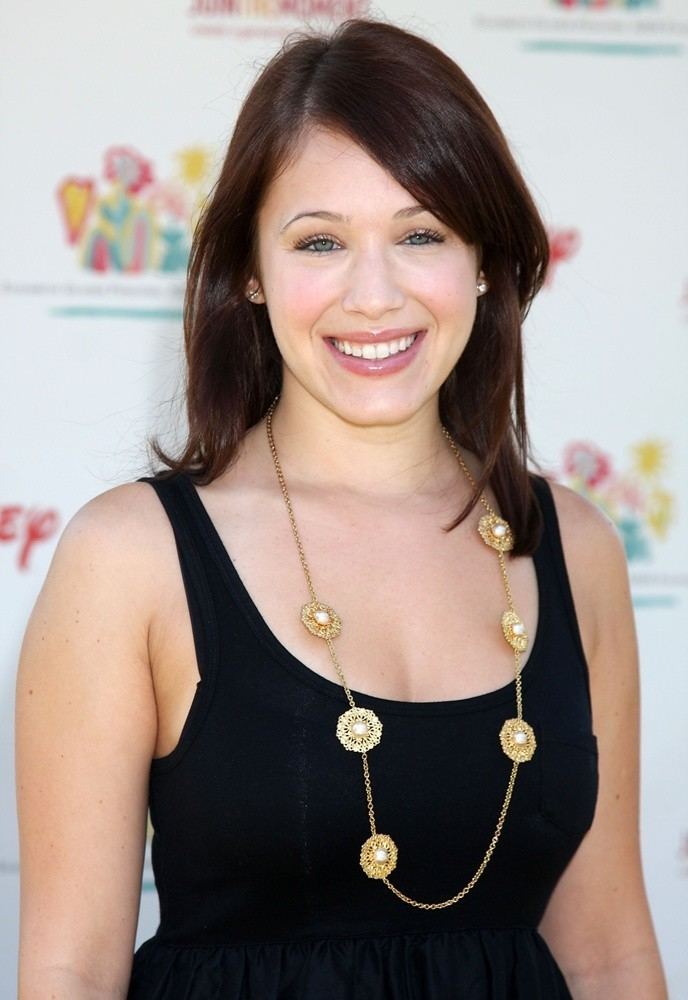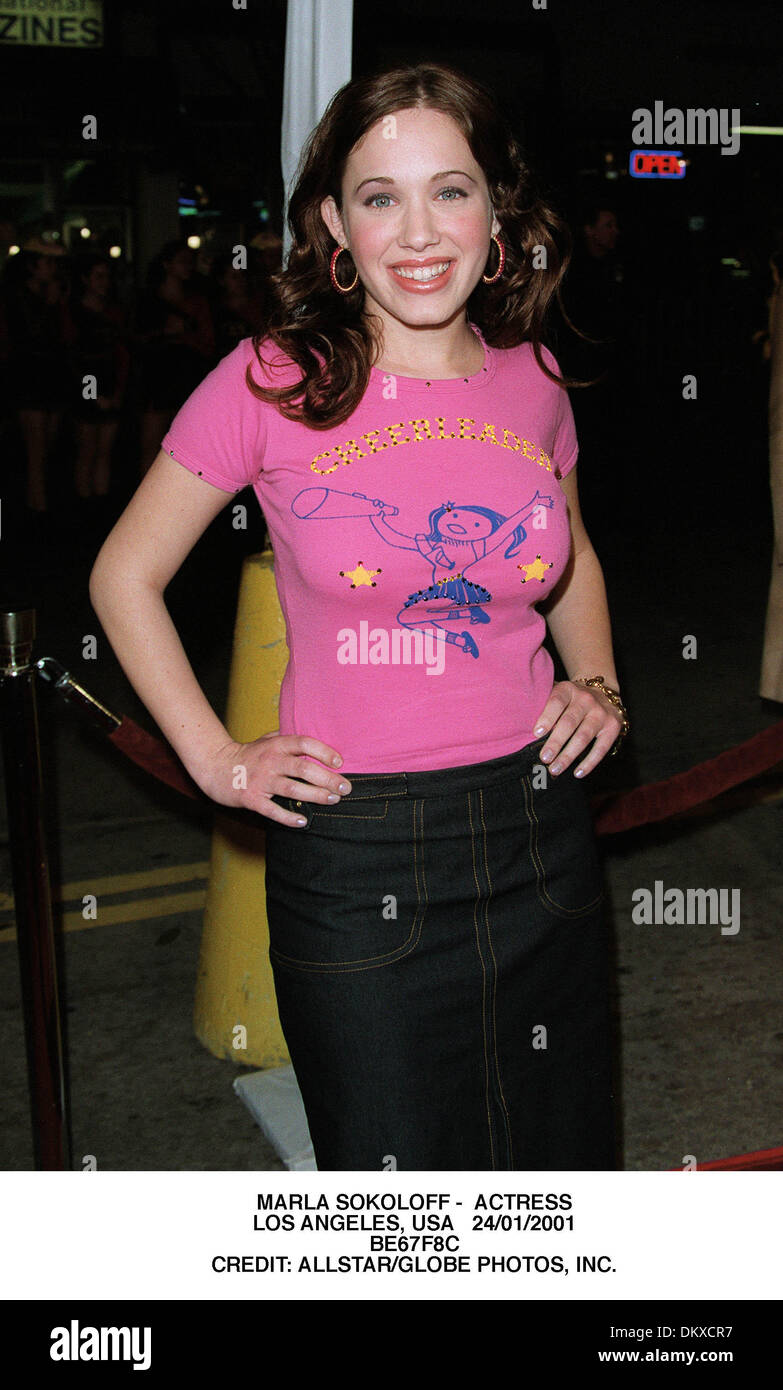Marla Sokoloff - A Look At Style And Presence
It's quite something, isn't it, how a single image or a moment on screen can really make you pause and think about someone. Sometimes, just seeing a person can bring to mind a connection, a sense of familiarity, or even a slight surprise at a resemblance. That, you know, can set off a whole train of thought about what makes someone stand out, or what makes their presence feel special, too it's almost.
When we happen upon someone like Marla Sokoloff, perhaps in a film or a television show, there's a moment where you might just think, "I've seen that look before," or "She reminds me of someone." It’s a very natural reaction, really, to connect faces and impressions, especially when there's a striking similarity to another public figure, for example, someone like Sandra Bennett. This initial observation, you see, often sparks a broader consideration of how appearances influence our perceptions and what we notice about individuals who are often in the public eye.
So, in a way, it makes you consider the broader picture of how we perceive public figures, what we notice about their appearance, and how those observations can lead to conversations about fashion, personal style, and the very fabric of how things are presented to us. It’s not just about who they are, but also how they carry themselves, what they wear, and even the way their work is shown to the world, which is a big part of their overall image.
Table of Contents
- Marla Sokoloff - A Familiar Face?
- What Do We Know About Marla Sokoloff?
- Personal Details and Bio Data for Marla Sokoloff
- How Does Style Shape Our Impressions?
- The Comfort and Versatility of Everyday Wear
- What Goes into Showcasing Clothing? Marla Sokoloff and the World of Presentation
- Are Models Paid Fairly in the Fashion Industry? Marla Sokoloff and Industry Insights
- Exploring the Nuances of Fashion Choices
Marla Sokoloff - A Familiar Face?
When we talk about someone like Marla Sokoloff, the first thing that often comes to mind for many is her presence on screen. It’s interesting, really, how a person’s face can stick with you, even if you can't quite place every single role they’ve had. There’s a certain quality to some individuals that just makes them memorable, and Marla Sokoloff, it seems, has that kind of recognizable quality. It was noted, for instance, that watching her in a movie brought to mind a strong similarity to Sandra Bennett, which is a fascinating observation, you know, about how faces can share certain characteristics, even among different people who work in the public eye. This kind of resemblance can sometimes be a conversation starter, making you think about how we categorize and remember public figures, and what visual cues really stand out to us, too it's almost.
The idea of one person looking like another is something that many of us notice, and it's a common topic of discussion. It’s not just about a passing resemblance; sometimes it’s a very distinct mirroring of features or expressions that makes you do a double-take. For Marla Sokoloff, this connection to Sandra Bennett highlights how our minds work to find patterns and similarities, even when we’re just casually watching something. It makes you wonder, actually, what other connections people make when they see someone they recognize, or someone who reminds them of another person they know from television or film. This recognition, in a way, forms a small part of their public identity, as people associate them with others they’ve seen.
What Do We Know About Marla Sokoloff?
When it comes to gathering specific details about Marla Sokoloff from our shared thoughts, there isn’t a huge amount of personal information immediately available. What we do have, you see, is a very clear impression of her visual presence, particularly the note about her looking a lot like Sandra Bennett. This single piece of information, while perhaps not a full biography, gives us a starting point to think about how public figures are perceived. It’s a bit like looking at a puzzle piece; it tells you something, but you also realize there’s a whole picture yet to be put together. So, in some respects, her appearance is the most prominent detail shared about her in these observations, which is quite interesting in itself.
We often form impressions of people based on what we see and hear, and sometimes, those impressions are based on just a small amount of shared information. For Marla Sokoloff, the strong resemblance to Sandra Bennett is the key piece of information that our observations provide. It suggests that her visual impact is quite strong, strong enough to draw comparisons to others in the public eye. This might make you wonder, too, what roles she’s played that might have contributed to her public recognition, or what kind of work she does that puts her in a position to be seen and compared. It’s a very human thing, after all, to make those sorts of connections when you encounter someone, especially someone you see on a screen.
Personal Details and Bio Data for Marla Sokoloff
Based on the shared thoughts, specific personal details or biographical data about Marla Sokoloff are not extensively provided. The main point of information we have is her striking resemblance to another public figure.
| Category | Information from Shared Thoughts |
|---|---|
| Noted Characteristic | Has an uncanny resemblance to Sandra Bennett. |
| Context of Appearance | Seen in a movie. |
| Other Details | No other specific personal or biographical data available from the provided text. |
This table, you know, really shows how limited the direct personal information about Marla Sokoloff is within the observations we have. It’s almost as if her presence is noted more for the connections it sparks rather than for a detailed account of her life or career. This is often the case with public figures; sometimes, a single striking feature or association becomes the most memorable thing about them in casual conversation, which is pretty interesting, if you think about it.
How Does Style Shape Our Impressions?
When we talk about public figures, whether it's Marla Sokoloff or anyone else who appears in media, their style choices often play a big part in how we see them. It's not just about the clothes themselves, but how they are put together, the overall feeling they give off, and how that contributes to a person's image. Our shared thoughts touch upon this quite a bit, particularly when considering clothing that feels good to wear and looks good without being over-the-top. There’s a definite appreciation for pieces that are easy to mix and match, that feel comfortable, and that are made with good materials. This suggests that for many people, style is about more than just looking fashionable; it’s also about practicality and a certain kind of lasting appeal, you know, something that feels right.
The idea of clothes being "interchangeable" and "cozy" really speaks to a desire for practical elegance. It’s about having items that work well together, making it simpler to put together an outfit that feels both polished and relaxed. This kind of approach to dressing, which is highlighted in the observations, suggests a preference for clothing that supports a comfortable way of living, rather than demanding a lot of effort for every single look. It’s a way of dressing that, in some respects, reflects a more relaxed yet still put-together approach to personal presentation, which is quite appealing to many.
The Comfort and Versatility of Everyday Wear
Thinking about what makes clothing truly appealing, the shared thoughts really bring to light the value of comfort and versatility. There's a mention, for instance, of a particular kind of pant that comes in various lengths – short, regular, and tall – which seems to be even longer than what you might find elsewhere. This kind of attention to fit, you know, makes a big difference in how comfortable and confident someone feels in their clothes. It’s about meeting people where they are, offering options that actually work for different body types and preferences, which is a pretty thoughtful approach to clothing design.
Then there’s the idea of pieces that are "interchangeable" and "cozy," made with "top-notch" materials. This speaks to a desire for clothing that isn't just a fleeting trend, but something that can be worn again and again, in different combinations, and still feel good. A long-sleeve biker jacket, for example, in colors like light heather gray and spiced coral, sounds like something that could easily fit into many wardrobes, offering both warmth and a bit of an edge. It’s about building a collection of items that work hard for you, rather than just sitting in the closet, which is a very practical way to approach dressing, too it's almost.
The mention of chenille joggers in a specific color also points to the appeal of comfortable, yet stylish, everyday wear. Joggers, by their very nature, suggest ease and relaxation, but when made from a material like chenille, they also offer a touch of softness and a bit of luxury. It’s about finding that sweet spot where comfort meets a pleasing look, which is something many people look for in their daily attire. This kind of clothing, you see, allows for a relaxed personal style that doesn't compromise on how good you feel wearing it.
And it's not just about clothes for outside the house. The observations also touch upon bed linens, quilts, and throws, suggesting that the desire for comfort and beauty extends to our personal spaces as well. The idea of "complete sets look so beautiful" speaks to a holistic approach to creating an environment that feels good and looks appealing. It’s a reminder that our choices in textiles, whether for our bodies or our homes, often reflect a deeper desire for comfort, quality, and a pleasing aesthetic, which is something that genuinely connects with people.
What Goes into Showcasing Clothing? Marla Sokoloff and the World of Presentation
When you see clothing presented, whether it’s on a shopping channel or in a magazine, there’s a whole process that goes into making it appealing. Our shared thoughts highlight the importance of a good presentation video, for instance. It's not just about seeing the item; it’s about how it’s shown, how it moves, and how it’s described. A host who provides "pertinent detailing" about size and who is "enjoyable to watch" can really make a difference in how a product is perceived. This suggests that the way something is presented can be just as important as the item itself, in some respects.
The details about a host mentioning the size they are wearing, along with the sizes on the models, are very practical and helpful for someone considering a purchase. It takes some of the guesswork out of online shopping, making it easier for people to imagine how an item might fit them. This kind of clear, direct information, you know, builds confidence and makes the shopping experience feel more reliable. It’s about providing enough context for a person to make an informed decision, which is a sign of a really good presentation.
The overall "enjoyable to watch" quality of a presentation also plays a big part. It's not just about facts and figures; it’s about the feeling you get from the interaction. A host who is engaging and pleasant can make the viewing experience a lot more pleasant, which in turn can make the products seem more appealing. This suggests that there’s a human element to selling, a connection that goes beyond just the product itself. It’s about creating an atmosphere that feels welcoming and informative, which is a pretty powerful tool in showcasing anything, really.
Are Models Paid Fairly in the Fashion Industry? Marla Sokoloff and Industry Insights
The topic of how models are compensated is something that our shared thoughts also touch upon, bringing up a very interesting point about the fashion industry. It’s noted that "basically all models are paid same fees for the area," but that "models doing same job in new york or california get more than" those in other places. This really highlights a difference in compensation based on location, which is a common pattern in many industries, actually. It makes you think about the economic geography of creative work, and how different regions might value certain skills or roles differently.
The observation that models "usually work for an agency that manages their career" and that these are "gig jobs, not permanent employment with an individual corporation," provides a glimpse into the nature of modeling as a profession. It’s a very project-based way of working, where income can vary depending on the availability of assignments and the demand for specific looks or types. This kind of employment structure, you know, means that models often have to manage their own schedules and financial planning in a very flexible way, which is quite different from a traditional full-time job.
This insight into how models are paid and how their careers are managed helps us to see the broader picture of the fashion world. It's not just about the clothes or the public figures who wear them, like Marla Sokoloff; it's also about the many people behind the scenes who make the industry run. Understanding the financial realities for models, for instance, adds another layer to our appreciation of the work that goes into presenting fashion and style to the public. It's a reminder that even seemingly glamorous jobs have their own set of economic realities, which is a very important thing to consider.
Exploring the Nuances of Fashion Choices
Beyond the big picture of public figures and industry structures, our shared thoughts also delve into the very personal side of fashion choices. There’s a mention of not shopping for fashions as much, which is something many people can relate to. Sometimes, our interest in new clothes ebbs and flows, and we might find ourselves content with what we already have, or simply focusing our attention elsewhere. This shift in shopping habits, you know, can be influenced by many things – personal preferences, lifestyle changes, or even just a feeling of having enough. It’s a very human experience, really, to have our interests change over time.
The admiration for certain designers, and the idea of being an "inveterate Eileen Fisher collector who also wears a lot of Linea," speaks to a deep appreciation for specific aesthetics and qualities in clothing. It suggests that for some, fashion isn't just about buying new things, but about building a collection of pieces that resonate with their personal style and values. This kind of loyalty to a particular designer or brand often comes from a consistent positive experience with their products – the fit, the feel, the way they hold up over time. It’s a very thoughtful approach to building a wardrobe, in some respects.
The comment about size consistency, like being "pretty consistently a large" in one brand, even with variations, is a very practical detail that many shoppers will recognize. It highlights the challenge of sizing across different labels and the comfort that comes from finding a brand where you can reliably predict your fit. This kind of information, you see, is incredibly valuable for online shopping, where you can’t physically try things on. It helps to reduce the uncertainty and makes the process a bit smoother, which is a big deal for many people who shop from home.
The appreciation for a particular coat color, described as "beautiful," also points to the emotional connection we can have with clothing. Color, after all, can evoke feelings and set a mood, and finding just the right shade can make an item truly special. It’s not just about the design or the material; sometimes, it’s the simple beauty of a color that captures our attention and makes a piece memorable. This kind of detail, you know, reminds us that fashion is also about personal preference and the joy we find in certain aesthetic qualities.
Finally, the mention of having items in "extra small and small" from the same designer, despite a general preference for a larger size in another brand, illustrates the variety of fits and styles that exist. It shows that personal preferences and body shapes mean that one size doesn't fit all, even within a single person's wardrobe. This kind of flexibility in sizing, and the willingness to explore different fits, reflects a very individual approach to dressing, where comfort and how something feels on the body are just as important as the label or the size number. It’s a very practical and personal way of approaching what we choose to wear.
The observations shared here, sparked by a simple note about Marla Sokoloff, truly open up a conversation about how we perceive public figures, the importance of style and comfort in clothing, the behind-the-scenes workings of fashion presentation, and the very personal journey of making choices about what we wear and how we live.

Marla Sokoloff - Alchetron, The Free Social Encyclopedia

Marla Sokoloff

Marla Sokoloff : MarlaSokoloff